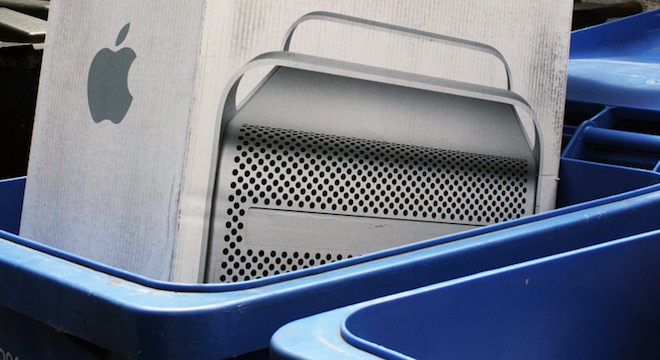The U.S. and East Asia may be known as the leading countries in the consumer electronics industry, but as it turns out, the greenest gadgets in the world come from India — specifically Indian electronics giant Wipro, according to a new report from Greenpeace International.
“Wipro is the biggest surprise,” said Casey Harrell, senior IT analyst for Greenpeace and lead author of the report, the Guide to Greener Electronics, in a phone interview with TPM. “This is the first time they were included in the ranking and have taken the top spot.”
The Guide to Greener Electronics is a kind of report card rating global electronics corporations in terms of their environmental policies and practices. First launched in 2006, the report has expanded to cover three different criteria in this latest, 18th edition: Energy and climate, products, and sustainable operations.
Below is a chart summarizing the findings. The full report is available as a PDF here:

In order to prepare it, Greenpeace spends months communicating with the companies surveyed, requesting documents and poring over information about the companies’ production processes and supply chains. The environmental advocacy group then evaluates the various components of each company’s operations — everything from whether they disclose their emissions to using recycled materials in products to withholding from using conflict minerals. In this case, Wipro scored medium to high on most categories.
Specifically, Wipro, a multi-industry company that produces everything from laptops to light bulbs — took the crown from U.S. computer leader HP in last year’s edition. In total, 16 companies were included in this year’s guide, up from 15 in 2011.
Wipro’s new overall high score — 7.1 on a scale from 1 to 10, with 10 being the greenest in terms of total environmental impact — was awarded specifically for committing to cut the greenhouse gas emissions of its operations 44 percent by 2015 (from a base year of 2008), the most of any company surveyed.
“Our office in India had previously been releasing a report with additional companies….but for this report, we wanted to be truly global — to put the biggest brand names from around the world together and see how much improvement they’ve made over the past years,” Harrell told TPM.
Meanwhile, North American industry titans lagged behind in this report: Apple, which had made major gains in the 2011 Greenpeace report, fell from 4th place to 6th place this time around.
“Apple misses out on points for lack of transparency,” Greenpeace noted in its report.
Dell suffered an even more precipitous drop, down from the number two spot in 2011 to number five in the latest rankings. Greenpeace faulted Dell for failing to make good on its prior pledge to eliminiate toxic chemicals — namely polyvinyl chloride plastic (PVC) and brominated frame retardants (BFRs) — from its product line. Greenpeace wants to see both of these compounds phased out of electronics entirely for their potential to build up in the environment and cause harm to both humans and wildlife.
By contrast, Harrell told TPM that Apple’s switch to aluminum bodies for many of its products in recent years was a good step in the right direction, as aluminum doesn’t contain these same types of chemicals.
“That’s an example of a company doing just fine with more stringent environmental protections, designing it to be non-toxic from the beginning,” Harrell noted.
The most improved company in the guide was also something of a surprise: Taiwanese giant Acer, maker of Google’s new $199 Chromebook laptop, among others. Acer climbed to number five from 12 in last year’s rankings.
“When we first started, they were down near the bottom,” Harrell explained. “Why they’ve changed, I can’t speculate, but we have seen a number of these Asian companies taking environmental issues more seriously.”
Research In Motion, the Waterloo, Ontario-based maker of the BlackBerry line, once again came in last place due primarily to not using recycled plastics in its products and for failing to have or even plan to have a clean electricity program.
Overall, though, Harrell and Greenpeace were encouraged by the results of the latest report, as they saw broad improvement by many companies and believe that such steps are a direct result of releasing rankings such as theirs.
As Harrell wrote in a blog post of its how on Greenpeace’s website: “Electronics companies can lead the way on clean energy – if you push them.”
However, Harrell noted that the next phase in getting electronics greener would be the most difficult yet — working to clean the embedded or embodied energy that goes into making all electronics products, that is, all of the carbon emissions produced throughout the supply chain.
Right now, much of that supply chain is still “highly powered by dirty energy,” Harrell said, pointing out that companies are inevitably mining raw materials to manufacture all of the products we carry around with us. Reducing the emissions and environmental impact associated with these types of operations is Greenpeace’s next goal.






